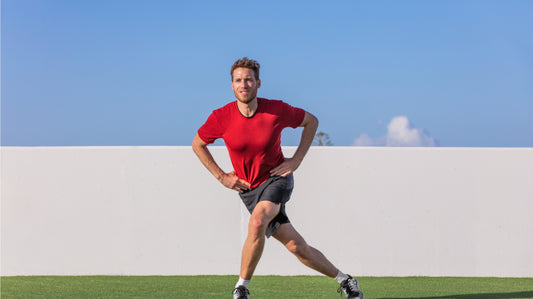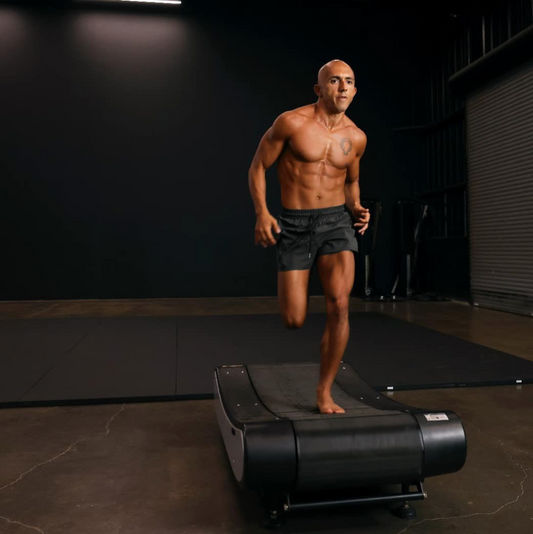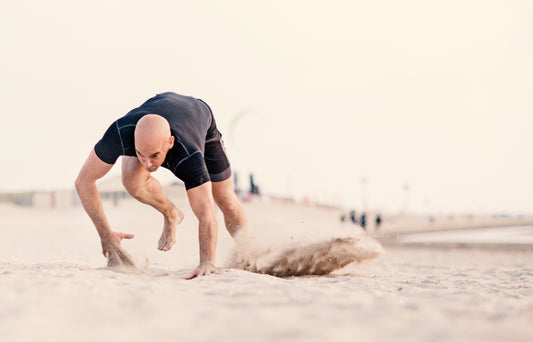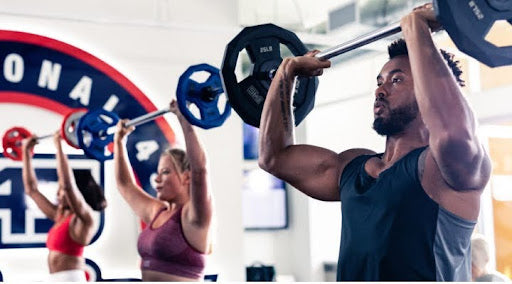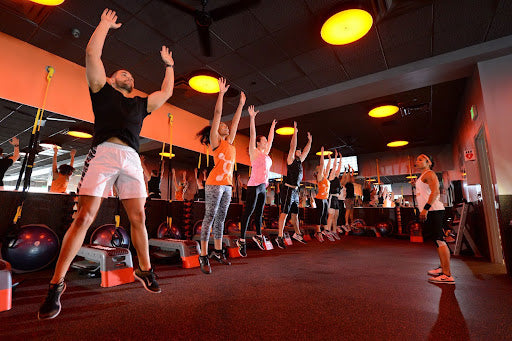Knowledge Vault
Preventing, not pretending. A shift toward better injury prevention.
In this article, we challenge the status quo of injury prevention in exercise and fitness, by reframing our approach to injury prevention and embracing better first principles we endeavour to empower individuals to reclaim agency over their health and wellbeing amidst a myriad of factors in our lifestyles that are constantly opposing our physiology.
Fitness Boot Camp Bust: Weighing the Worth of Whipping Workouts
In the realm of training, a fitness boot camp or boot camp training is a popular methodology of working out that people partake in to achieve their desired health goals. This article will delve into the pitfalls of boot camp training, and if there are better alternatives when it comes to training more sustainably and still achieve all your health and fitness goals.
The Hidden Costs of 'Free' Workouts: Why Nothing Comes Without a Price
Effective workout plans for beginners, which are truly beneficial, often come with a cost, reflecting their value. It's important to understand that while free workout plans might seem appealing, they could end up costing more in the long run if they lead to injuries or other issues that require treatment.
Backwards Running: Is it a Simple Approach to Knee Pain Relief?
The body already has a predisposition to be spiraled in one direction, causing an asymmetry in the skeletal structure. While instituting backwards running, this asymmetry will cause the tension associated around the knee to be applied on the posterior chain without addressing why the knee joint is not efficiently absorbing impact from running forwards.
The Challenges of Personal Training and Personal Training Apps
In the modern day of health and fitness, more and more people are flocking towards personal training and with our fast paced society, the convenience of accessing a training session at your fingertips is all too tempting. These avenues seem to offer potential benefits for individuals seeking guidance in their fitness journeys, but are not immune to challenges, this article sheds light on some of the reasons for their failures.
Neck Stretches For Pain: Not All It’s Cracked Up To Be
The critical drawback of stretching for neck pain is that the muscles are put in a passive lengthened position without being followed with elastic recoil. The best stretch is where the whole body is tensioned through corrective exercises to rebound with elastic recoil as seen in elite athlete sprinters at top speeds.
Animal Flow, Injury, and the Quest for Results
As individuals immerse themselves in Animal Flow, their bodies adapt specifically to these unique movements. However, these adaptations may not necessarily enhance overall fitness or functionality. In fact, these adaptations may be detrimental when they lead to imbalances or weaknesses in specific muscle groups or joints, increasing the risk of injuries.
The Hidden Downsides of Exercise Snacks: Rethinking Brief Workouts
Exercise snacks or mini workouts throughout the day have been all the new craze. In this article we will discuss how to make ‘exercise snacks’ actually work for you and provide realistic actionable behaviors that will help you lose weight and tone up and ultimately live a healthy pain free life.
Beyond the Sagittal Plane: The Pitfalls of Sagittal Plane-Dominant Training
While weightlifting in the sagittal plane is widely acknowledged, it's essential to acknowledge the current limitations on its supposed benefits. Activities such as sprinting, boxing, kickboxing, MMA, football, and basketball go beyond the sagittal plane. In this article, we cover the importance of improving movement in all three planes of motion to stay pain free while improving strength, flexibility, and athleticism.
Off the Beaten Path: Exploring the Challenges and Evolutionary Perspectives around Trail Running
Trail running has evolved into a captivating fitness pursuit, promising enthusiasts the allure of robust legs and sculpted abs forged through the satisfying accumulation of kilometers. The persistent pounding on the ground and enduring long distances can unveil significant challenges in the form of postural, muscular, and structural imbalances specific to trail running. Join us as we navigate through the intricacies of optimizing outdoor workouts for both physical well-being and symmetry.
Understanding Low Impact Exercise: Rethinking Gentle Workouts
The realm of low impact exercises, driven by the need to avoid pain from working out has gotten more popular over time. Learn a more thought-out approach to low impact exercises aimed at optimizing fundamental movements to keep you pain free.
Weighing The Merits of Flow Yoga
Since yoga positions are not based upon the gait cycle, the poses held in Flow Yoga stretch the body through ranges of motion that the body did not evolve to undergo. Repeatedly practicing Yoga will result in overly lengthened tissues that have a hard time supporting joints and bones, especially in a dynamic or athletic context.
Back Squats and Deadlifts: Sagittal-Based Overload
We break down the shortcomings of the Barbell Back Squat and Barbell Deadlift, widely used and recommended by trainers, strength and conditioning coaches, and physical therapists. Why your training should revolve around the FP First 4, to include all planes of motion rather than staying in the sagittal plane.
F45, is injury worth the sweat?
The fitness industry is kind of a wild west, anything goes and anyone can start a “movement” culture, claim it to be scientific and then sell it. F45 training is not exempt from this blueprint, that really has its origins rooted in capitalism rather than in the field of scientific endeavor. When selecting what is F45? Or F45 near me on their website one of the first statements says “It’s innovation”. When buzzwords like these get thrown around, along with “functional”, “science” and “results driven” it muddies the waters for anyone looking to make a decision about which direction to go in relation to health and fitness.
Orange Theory: Is the Juice Worth the Squeeze?
Orange Theory is based on the theory of excess post-exercise oxygen consumption (EPOC), which promises increased metabolism and calorie burn long after the workout ends. The theory of maximizing calorie burn and metabolic rate are good. However, it's the application of these principles that make this methodology flawed.
Walking for Exercise: How Beneficial is it Really?
The general consensus amongst health professionals is that getting at least 10,000 steps in a day is pivotal for our physiological health. But what if someone is consistently hitting this milestone of 10,000 steps with poor or inefficient mechanics? Would this still reduce the risks for these diseases, or would it make things much worse? This article will dive deeper into questions like these and equip the reader with the knowledge on how to tackle their fitness goals with more intention and knowledge.
Unlocking Athletic Excellence: A Comprehensive Approach
The synergy between health and aesthetics is the cornerstone of our methodology at Functional Patterns. In this article we delve into the intricacies of sports performance, strength and conditioning, cross-training, and the conditioning exercises employed by professional athletes to unearth the keys to their exceptional abilities.
Endurance Training: The Functional Patterns Approach
While many associate Endurance with the ability to partake in long grueling workouts, true endurance is rooted in the body's capability to efficiently withstand stress over prolonged periods. In this article we will cover the misconception around endurance training, how you can train less while making getting more out of your workouts, and why shifting your focus with your training goals will give you endurance gains plus much more.
What is the Proper Squat Technique?
Squats are one of the most common exercises being done at the gym in modern society and said to be one of the most optimal ways to build lower body strength. At Functional Patterns, we incorporate squats and proper squat technique into our training, in this article we will be exploring what is proper squat technique and looking at why respecting our evolutionary traits when it comes to training should be a priority rather than focusing solely on improving your squat technique.
FP First Four: The Foundations of Human Movement
In modern society, due to the development of technological advancements in our infrastructure such as grocery stores, the electrical grid, and agriculture, the function of movement for humans has slowly shifted away from hunting or fleeing from predators, and instead has turned into exercise as a means of staying healthy. In this article, we will discuss why standing, walking, running, and throwing are considered the FP First Four movements and provide insight as to what differentiates FP from the rest of the industry when it comes to your health and longevity.
Weightlifting Belts and Intra-Abdominal Pressure
It's a common sight to witness athletes donning weightlifting belts to enhance core stability during demanding lifts. While these belts can assist in achieving heavier lifts, it's essential to delve into the reasons behind the need for such support and also recognize their limitations.
Unleash Your Core Potential: The Science Behind the Plank
The plank stands as a symbol of core strength and stability, performing these seemingly simple exercise incorrectly could undermine its benefits and potentially lead to injury. We take a deep dive into this exercise and uncover why it can lead to better posture and efficient movement!
Calisthenics Exercises: Risks vs Rewards
We touch on the regime and background of Calisthenics, then begin to assess whether some of the most common calisthenic workouts actually merit their popularity - Or, if there may be more efficient ways to build muscle and develop a lean physique that is both pain and injury free.
Full Body Kettlebell Workouts: Functional or Impractical?
For individuals new to kettlebell training, intentions are a key factor to consider, but possibly even more important is assessing your posture and movement to determine if you have any imbalances or injuries that can cause compensations during exercise.





